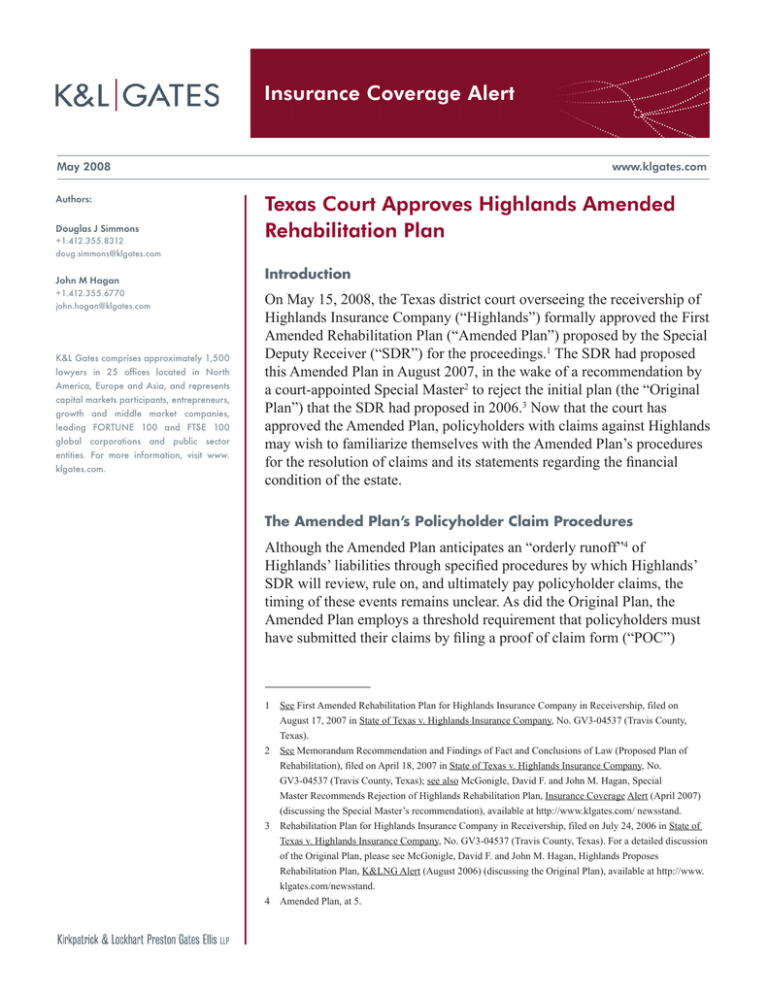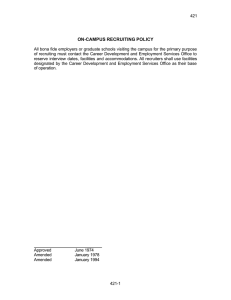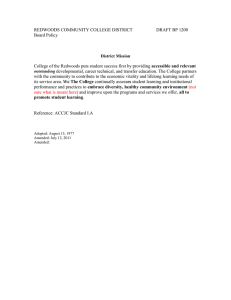
Insurance Coverage Alert
May 2008
Authors:
Douglas J Simmons
+1.412.355.8312
doug.simmons@klgates.com
John M Hagan
+1.412.355.6770
john.hagan@klgates.com
K&L Gates comprises approximately 1,500
lawyers in 25 offices located in North
America, Europe and Asia, and represents
capital markets participants, entrepreneurs,
growth and middle market companies,
leading FORTUNE 100 and FTSE 100
global corporations and public sector
entities. For more information, visit www.
klgates.com.
www.klgates.com
Texas Court Approves Highlands Amended
Rehabilitation Plan
Introduction
On May 15, 2008, the Texas district court overseeing the receivership of
Highlands Insurance Company (“Highlands”) formally approved the First
Amended Rehabilitation Plan (“Amended Plan”) proposed by the Special
Deputy Receiver (“SDR”) for the proceedings.1 The SDR had proposed
this Amended Plan in August 2007, in the wake of a recommendation by
a court-appointed Special Master2 to reject the initial plan (the “Original
Plan”) that the SDR had proposed in 2006.3 Now that the court has
approved the Amended Plan, policyholders with claims against Highlands
may wish to familiarize themselves with the Amended Plan’s procedures
for the resolution of claims and its statements regarding the financial
condition of the estate.
The Amended Plan’s Policyholder Claim Procedures
Although the Amended Plan anticipates an “orderly runoff”4 of
Highlands’ liabilities through specified procedures by which Highlands’
SDR will review, rule on, and ultimately pay policyholder claims, the
timing of these events remains unclear. As did the Original Plan, the
Amended Plan employs a threshold requirement that policyholders must
have submitted their claims by filing a proof of claim form (“POC”)
1
2
3
4
See First Amended Rehabilitation Plan for Highlands Insurance Company in Receivership, filed on
August 17, 2007 in State of Texas v. Highlands Insurance Company, No. GV3-04537 (Travis County,
Texas).
See Memorandum Recommendation and Findings of Fact and Conclusions of Law (Proposed Plan of
Rehabilitation), filed on April 18, 2007 in State of Texas v. Highlands Insurance Company, No.
GV3-04537 (Travis County, Texas); see also McGonigle, David F. and John M. Hagan, Special
Master Recommends Rejection of Highlands Rehabilitation Plan, Insurance Coverage Alert (April 2007)
(discussing the Special Master’s recommendation), available at http://www.klgates.com/ newsstand.
Rehabilitation Plan for Highlands Insurance Company in Receivership, filed on July 24, 2006 in State of Texas v. Highlands Insurance Company, No. GV3-04537 (Travis County, Texas). For a detailed discussion
of the Original Plan, please see McGonigle, David F. and John M. Hagan, Highlands Proposes
Rehabilitation Plan, K&LNG Alert (August 2006) (discussing the Original Plan), available at http://www.
klgates.com/newsstand.
Amended Plan, at 5.
Insurance Coverage Alert
with the SDR by March 30, 2007.5 For
POCs that met this deadline, the Amended
Plan empowers the SDR to review each
POC individually and recommend whether
the claim should be allowed, disallowed,
or compromised in whole or in part.6
Unfortunately, no explicit timetable is
provided in the Amended Plan for the
review of any particular POC, so it appears
that the SDR has significant discretion in
deciding how to order its review of the
thousands of POCs that were received
by the deadline. Likewise, although the
Amended Plan speaks to the payment
of allowed policyholder claims “as they
come due on a timely basis,”7 it also gives
the SDR discretion to make distributions
over time on individual claims if the SDR
determines that the cash assets of the estate
warrant a delayed payout.8
should be disallowed, in whole or in part,
the SDR must provide written notice to
the policyholder and its attorney of that
decision.9 If the policyholder wishes to
challenge that determination, it has 45 days
from receipt to serve written objections
on the SDR.10 If the policyholder fails
to file timely objections, then the SDR’s
recommendation is final and the claim
may be processed, and paid if applicable,
without further court order.11 But, if the
policyholder does file timely objections and
the policyholder and SDR cannot resolve
these objections, then the SDR shall submit
the dispute to the receivership court, which
will resolve the claim.12 The Amended
Plan states that the receivership court’s
determination of the claim constitutes a
final judgment,13 and either party may then
appeal the court’s decision.14
The Amended Plan also addresses
how disputes between the SDR and
policyholders about the validity and
valuation of particular claims will be
resolved. First, where the SDR determines
that a particular policyholder claim
Of potentially great consequence for
policyholders with “Incurred But Not
Reported” (“IBNR”) claims against
Highlands, the Amended Plan authorizes
the SDR to set a second claim bar date in
the future “to fix a final claims liquidation
and bar date by which any remaining claim
must be filed, whether or not liquidated,
mature or contingent.”15 If this second bar
date is announced, the SDR will “describe
the process for estimating and paying at
present value any remaining contingent or
unmatured claims, or for disallowing such
claims as allowed by the [Texas] Insurer
5
6
7
8
Amended Plan, at 37. If a policyholder failed to file a POC by
March 30, 2007, the policyholder may still file a POC and its
claim will receive the same priority as timely-filed claims if
(1) the policyholder did not know of the March 30, 2007
deadline and had not received notice thereof, (2) a POC is filed
by the earlier of March 31, 2009 or 90 days after learning of
the March 30, 2007 deadline, and (3) payment of the claim
will not prejudice the orderly administration of the Highlands
estate. Amended Plan, at 38. Otherwise, a late-filed POC will
receive lower priority than timely-filed claims. Amended
Plan, at 37.
Amended Plan, at 39.
Amended Plan, at 15; see also Amended Plan, at 30 (stating,
“Policy Claims shall be payable in full in the allowed amounts
during the course of the rehabilitation proceedings, except as
otherwise provided herein”).
Amended Plan, at 30. Regardless of the timing of payment,
any allowed claim in excess of $1 million must receive court
approval before it can be paid. Amended Plan, at 39.
9 Amended Plan, at 39.
10 Amended Plan, at 39.
11 Amended Plan, at 39-40.
12 Amended Plan, at 40. The Amended Plan does not provide
an explicit deadline, or any specific timetable, for when the
SDR must submit disputed claims to the district court.
13 Amended Plan, at 40.
14 Tex. Civ. Prac. & Rem. Code Ann. § 51.012 (2007).
15 Amended Plan, at 38.
May 2008 | 2
Insurance Coverage Alert
Receivership Act.”16 Thus, based on this
provision of the Amended Plan, the SDR
may try to use a second bar date to cut off
contingent and/or unliquidated claims –
such as those faced by many policyholders
with significant environmental or toxic tort
liabilities. At present, the SDR has provided
no indication of if it will set this final bar
date, let alone when, so policyholders with
IBNR claims may wish to monitor the
Highlands proceedings.
The Highlands Estate’s
Financial Condition
One of the key assertions by the SDR in
the Amended Plan (and the Original Plan),
which appears to have been accepted by
the Texas district court given its recent
approval of the Amended Plan, is that the
Highlands estate should have sufficient
assets to permit the payment of approved
policyholder claims in full over the next
several years. More specifically, the
Amended Plan projects – subject to various
caveats – that the estate will be able to pay
100% of approved policyholder claims as
they come due through at least the end of
2015.17 This projection is based upon the
Amended Plan’s economic cash flow model
(“ECFM”),18 which purports to account
not only for future payouts, but also for
future recoveries by the estate, such as from
16 Amended Plan, at 38.
17 Amended Plan, at 12-14.
18 Amended Plan, at 13.
Highlands’ reinsurers.19 Ultimately, the
ECFM predicts that at the end of 2015, after
nearly a decade of payouts on approved
claims, the Highlands estate will still have
approximately $163.5 million remaining
in cash and investments.20 Of course, some
policyholders and observers are skeptical
of these arguably rosy projections, as
evidenced by the fact that the SDR has
consummated a number of policy buyouts
over the last two years at levels significantly
below 100% of the claimed values.
Skepticism of the long-term accuracy of the
ECFM model is heightened by the fact that
the Amended Plan explicitly empowers the
SDR to request, at any time, that the district
court convert Highlands’ rehabilitation
into a liquidation proceeding. As the plan
describes it, whenever the SDR determines
that the estate’s financial condition will be
insufficient to pay all allowed policyholder
claims in full as they come due, the SDR
may file an application for liquidation.21
Again, policyholders may wish to monitor
the Highlands proceedings, including the
periodic financial reports purporting to
itemize the estate’s total liabilities and total
assets, to see over time how the ECFM
model’s projections fare against reality –
with an eye towards discerning how that
reality might impact the policyholder’s
valuation of its unresolved claim
against Highlands.
19 Amended Plan, at 16.
20 Amended Plan, at 15-16.
21 Amended Plan, at 51-52.
May 2008 | 3
Insurance Coverage Alert
Conclusion
Absent some successful appeal of the
Texas district court’s recent decision, the
Amended Plan will govern the resolution of
policyholder claims against the Highlands
estate for the foreseeable future. Therefore,
policyholders that filed timely POCs may
wish to acquaint themselves with the
claim-resolution procedures provided in
the Amended Plan and monitor the overall
health of the estate until their individual
claims are resolved and paid. Policyholders
with IBNR claims may wish to watch for
the SDR to set a second claim bar date,
which could require the submission of
additional information and could have
the effect of cutting off contingent or
unliquidated claims. Policyholders may
monitor ongoing developments in the
Highlands rehabilitation at the SDR’s website:
http://www.highlandsrehabplan.com.
K&L Gates comprises multiple affiliated partnerships: a limited liability partnership with the full name Kirkpatrick & Lockhart Preston Gates Ellis LLP
qualified in Delaware and maintaining offices throughout the U.S., in Berlin, in Beijing (Kirkpatrick & Lockhart Preston Gates Ellis LLP Beijing
Representative Office), and in Shanghai (Kirkpatrick & Lockhart Preston Gates Ellis LLP Shanghai Representative Office); a limited liability
partnership (also named Kirkpatrick & Lockhart Preston Gates Ellis LLP) incorporated in England and maintaining our London and Paris offices; a
Taiwan general partnership (Kirkpatrick & Lockhart Preston Gates Ellis) which practices from our Taipei office; and a Hong Kong general
partnership (Kirkpatrick & Lockhart Preston Gates Ellis, Solicitors) which practices from our Hong Kong office. K&L Gates maintains appropriate
registrations in the jurisdictions in which its offices are located. A list of the partners in each entity is available for inspection at any
K&L Gates office.
This publication/newsletter is for informational purposes and does not contain or convey legal advice. The information herein should not be used
or relied upon in regard to any particular facts or circumstances without first consulting a lawyer.
Data Protection Act 1998—We may contact you from time to time with information on Kirkpatrick & Lockhart Preston Gates Ellis LLP seminars and
with our regular newsletters, which may be of interest to you. We will not provide your details to any third parties. Please e-mail
london@klgates.com if you would prefer not to receive this information.
©1996-2008 Kirkpatrick & Lockhart Preston Gates Ellis LLP. All Rights Reserved.
May 2008 | 4




